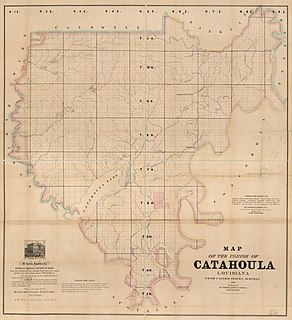 W
WFeuds in the United States deals with the phenomena of historic blood feuding in America. These feuds have been numerous and some became quite vicious. Often, a conflict which may have started out as a rivalry between two individuals or families became further escalated into a clan-wide feud or a range war, involving dozens—or even hundreds—of participants. Below are listed some of the most notable blood feuds in United States history, most of which occurred in the Old West.
 W
WThe Dead Rabbits riot was a two-day civil disturbance in New York City evolving from what was originally a small-scale street fight between members of the Dead Rabbits and the Bowery Boys into a citywide gang war, which occurred July 4–5, 1857. Taking advantage of the disorganized state of the city's police force—brought about by the conflict between the Municipal and Metropolitan police—the fighting spiraled into widespread looting and damage of property by gangsters and other criminals from all parts of the city. It is estimated that between 800 and 1,000 gang members took part in the riots, along with several hundred others who used the disturbance to loot the Bowery area. It was the largest disturbance since the Astor Place Riot in 1849 and the biggest scene of gang violence until the New York Draft Riots of 1863. Order was restored by the New York State Militia, supported by detachments of city police, under Major-General Charles W. Sandford.
 W
WThe French–Eversole feud occurred primarily from 1887–1894. The events occurred in the mountains of southeastern Kentucky and were mainly situated in Hazard, Perry County. The two instigators of this feud were Joseph C. Eversole and Benjamin Fulton French, who were both merchants and lawyers and at one time were friendly. The war or feud was a media sensation and was covered by many US papers at the time. The First report was in the Louisville Courier-Journal on June 30, 1886 on Page 1. A listing of the various media reports is included at the end of this article. Ultimately, those media reports became the basis for various books written about the French-Eversole War.
 W
WThe Hatfield–McCoy feud, also described by journalists as the Hatfield–McCoy war, involved two rural American families of the West Virginia–Kentucky area along the Tug Fork of the Big Sandy River in the years 1863–1891. The Hatfields of West Virginia were led by William Anderson "Devil Anse" Hatfield, while the McCoys of Kentucky were under the leadership of Randolph "Ole Ran'l" McCoy. Those involved in the feud were descended from Joseph Hatfield and William McCoy (born c. 1750). The feud has entered the American folklore lexicon as a metonym for any bitterly feuding rival parties.
 W
WThe Johnson County War, also known as the War on Powder River and the Wyoming Range War, was a range conflict that took place in Johnson County, Wyoming, from 1889 to 1893. The conflict began when cattle companies started ruthlessly persecuting alleged rustlers in the area, many of whom were settlers who competed with them for land, livestock and water rights. As violence swelled between the large established ranchers and the smaller settlers in the state, it finally culminated in the Powder River Country when the ranchers hired gunmen to invade the county. The gunmen's initial incursion in the territory aroused the small farmers and ranchers, as well as the state lawmen, and they formed a posse of 200 men that led to a grueling stand-off. The siege ended when the United States Cavalry on the orders of President Benjamin Harrison relieved the two forces, although further fighting persisted in the following months.
 W
WThe Jones–Liddell feud (1847-1870) also known as the Liddell–Jones feud or the Black River War was an ongoing warring dispute between two prominent families from Catahoula Parish, Louisiana. It resulted in the death of at least six people, with other estimates suggesting as many as fourteen.
 W
WThe Shootout on Juneau Wharf was a gunfight between Jefferson Randolph "Soapy" Smith, Frank H. Reid, and Jesse Murphy that took place on Friday, July 8, 1898, at approximately 9:15 p.m. in Skagway, District of Alaska, in the United States. Smith was shot in the heart and died shortly afterwards, and Reid died of his injuries 12 days later.
 W
WThe Lincoln County feud occurred in the Harts Creek community of Lincoln and Logan counties, West Virginia, between 1878 and 1890.
 W
WThe Pleasant Valley War, sometimes called the Tonto Basin Feud, or Tonto Basin War, or Tewksbury-Graham Feud, was a range war fought in Pleasant Valley, Arizona in the years 1882-1892. The conflict involved two feuding families, the Grahams and the Tewksburys. The Grahams were ranchers, while the Tewksburys, who were part Indian, started their operations as cattle ranchers before branching out to sheep.
 W
WRailroad Wars were business rivalries between railroad companies, which occurred frequently in American history. Although they were usually little more than legal disputes inside a courtroom, they sometimes turned into armed conflicts. There has been competition between railroad companies since the beginning of railroading in the United States, but violent confrontations were most common in the final quarter of the 19th century, particularly in the Old West.